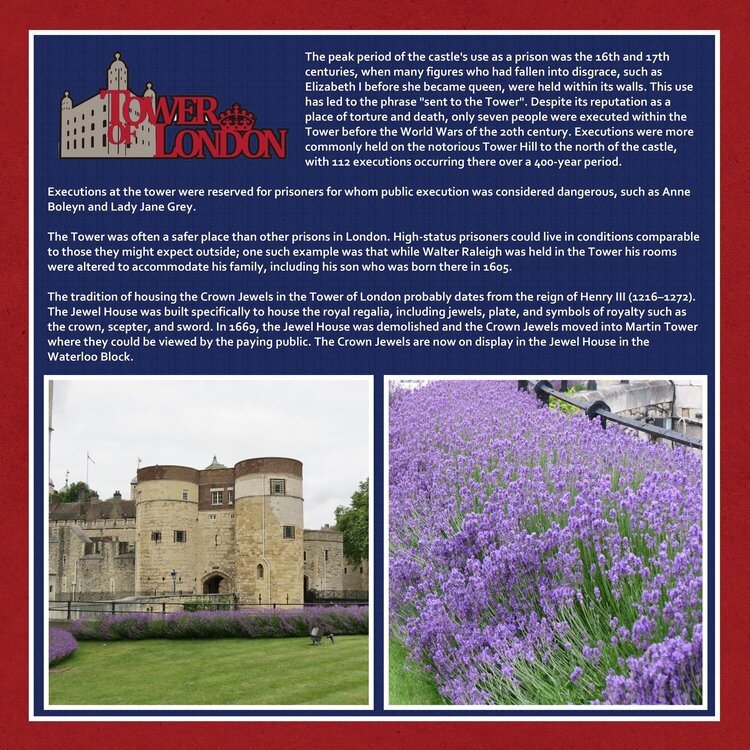Take 9% OFF orders $100 or more with code: SPRING


 Give a Cheer
Give a Cheer
The peak period of the castle's use as a prison was the 16th and 17th centuries, when many figures who had fallen into disgrace, such as Elizabeth I before she became queen, were held within its walls. This use has led to the phrase "sent to the Tower". Despite its reputation as a place of torture and death, only seven people were executed within the Tower before the World Wars of the 20th century. Executions were more commonly held on the notorious Tower Hill to the north of the castle, with 112 executions occurring there over a 400-year period.
Executions at the tower were reserved for prisoners for whom public execution was considered dangerous, such as Anne Boleyn and Lady Jane Grey.
The Tower was often a safer place than other prisons in London. High-status prisoners could live in conditions comparable to those they might expect outside; one such example was that while Walter Raleigh was held in the Tower his rooms were altered to accommodate his family, including his son who was born there in 1605.
The tradition of housing the Crown Jewels in the Tower of London probably dates from the reign of Henry III (1216–1272). The Jewel House was built specifically to house the royal regalia, including jewels, plate, and symbols of royalty such as the crown, scepter, and sword. In 1669, the Jewel House was demolished and the Crown Jewels moved into Martin Tower where they could be viewed by the paying public. The Crown Jewels are now on display in the Jewel House in the Waterloo Block.
No products have been added to this project.
Thanks for spreading positivity!
August 16, 2016
July 19, 2016
July 18, 2016
July 15, 2016
July 12, 2016
July 12, 2016
July 11, 2016
July 11, 2016
July 11, 2016
July 11, 2016
July 11, 2016
July 10, 2016